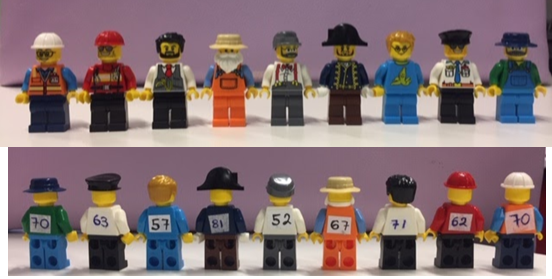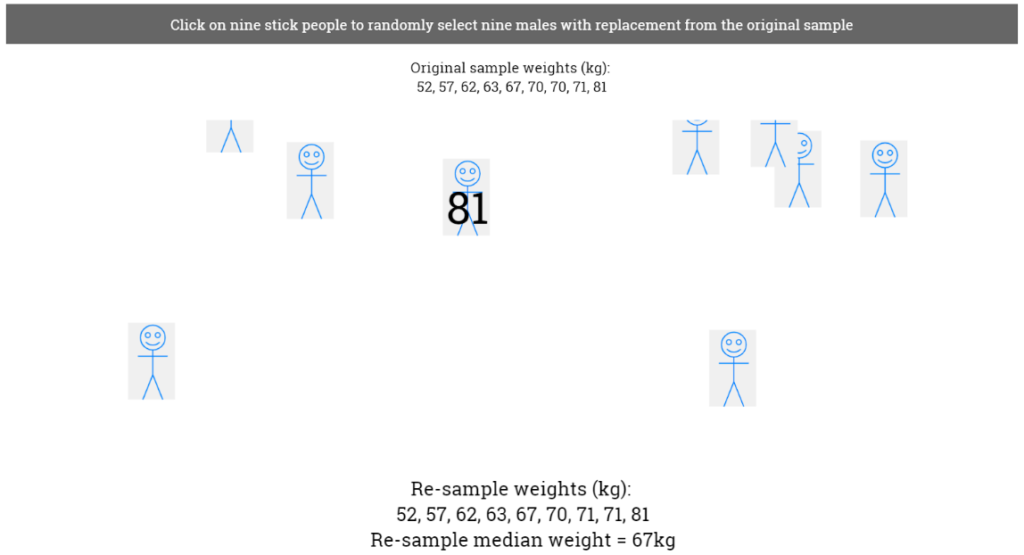
The lecture in which I usually teach introducing bootstrapping involves hands-on re-sampling with tear out data cards. The context of this teaching example is to estimate the median weight of a population of males from a sample (of 9). This activity is difficult to run smoothly in a large lecture – some students are still carefully tearing out the cards while others have finished, some students don’t even have a printed version of the book because they use the PDF version and even if everything runs perfectly the whole exercise takes up a lot of valuable lecture time without necessarily the enhanced student understanding. This is without considering the fact that many students don’t attend this lecture in person but instead watch the recording at home.
Part of the benefit of a hands-on activity like this is that students have a tangible memory of the experience of re-sampling which they can think back on when they are working on a computer simulation. I wanted to still give students this connection to tangible re-sampling, but without the need for the physical data cards. To achieve this I improved my demonstration of re-sampling by using Legomen.

This made the demonstration more colourful and interesting and, I believe, created a more lasting memory of the re-sampling process. Students watched (via the document camera) as the Legomen went into a black bag, the bag was shaken, and one Legoman was drawn out. The weight of the Legoman (written on his back) was recorded and he was replaced in the bag. The process was repeated until a re-sample of 9 was selected.
To follow this demonstration I wanted the students to then take their own re-samples using an app Anna developed.

Using this app the students then selected their own random re-sample and generated their own re-sample median. I then collected the student re-sample medians to build up a bootstrap distribution before moving to a VIT demonstration.
I believe the students were more engaged during the demonstration of re-sampling because of the novelty of the Legomen. The students were also better able to see how the re-sampling was done and it was easy to make note of when a particular Legoman was selected for the re-sample more than once because I would remark on his hat, his hair, or his outfit. Being able to then match what they had seen to the online interactive meant that students had their own experience of re-sampling. The app made this process much faster and easier than when we used the paper data cards. I think the real benefit to this approach was using both the demonstration and the student interactive together.

Emma is a Professional Teaching Fellow in the Department of Statistics, University of Auckland.